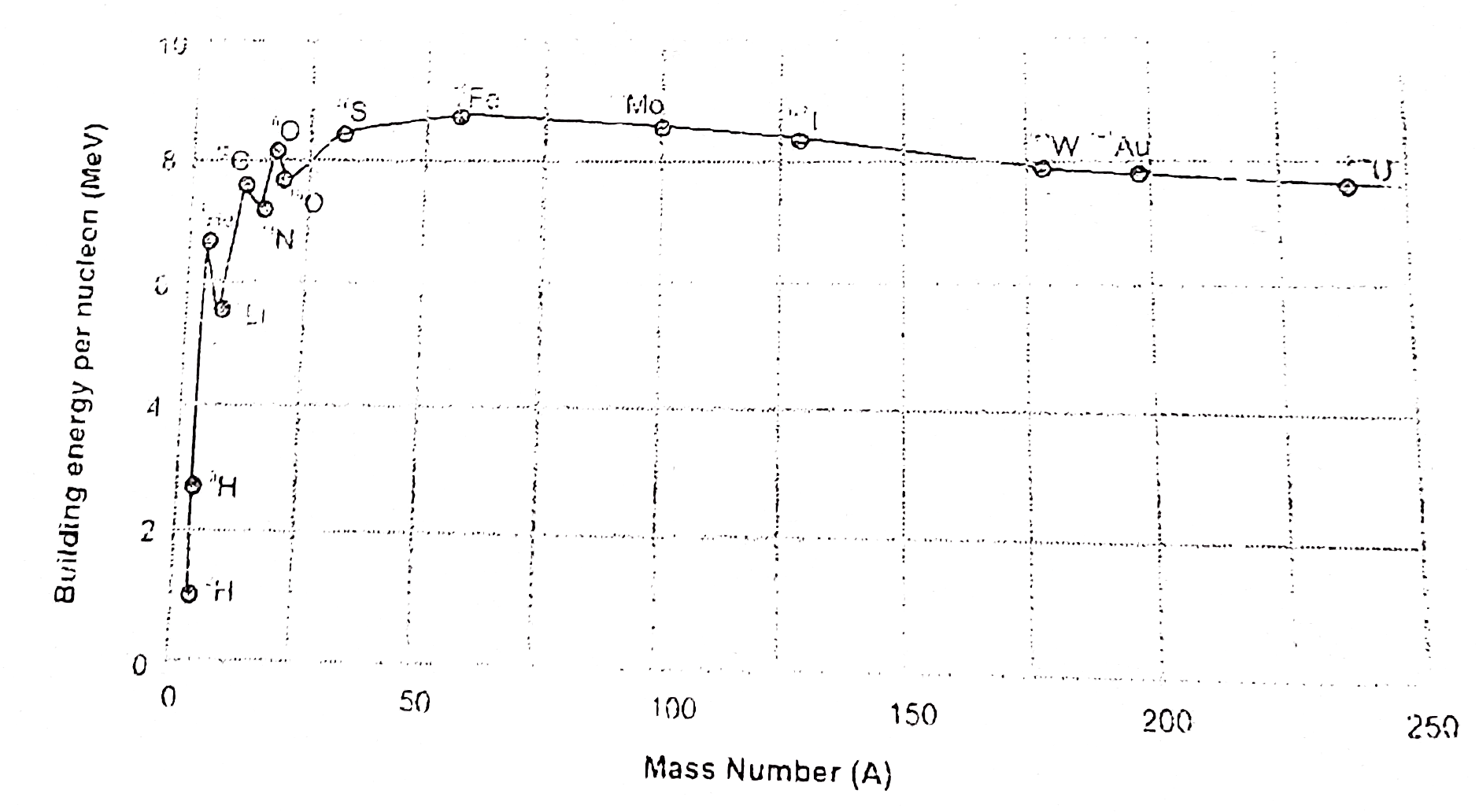Statement-1:Light nuclei having equal number of protons and neutrons are more stable
Statement-2:In heavy nuclei, there is an excess of neutrons due to comlomb repulsion between protons .
Statement-1 is True , Statement-2 is True ,Statement-2 is a correct explanation for Statement-1
Statement-1 is True , Statement-2 is True ,Statement-2 is NOT a correct explanation for Statement-1
Statement-1 is True , Statement-2 is False
Statement-1 is False, Statement-2 is True
The correct Answer is:B
To analyze the given statements regarding the stability of light and heavy nuclei, let's break down the reasoning step by step.
1. Understanding Statement 1:
- The statement claims that light nuclei with an equal number of protons and neutrons are more stable.
- In light nuclei, the strong nuclear force, which binds protons and neutrons together, can effectively counteract the repulsive force between protons (since they are positively charged).
- When the number of protons equals the number of neutrons, the attractive strong nuclear force is maximized relative to the repulsive forces, leading to greater stability.
Conclusion: Statement 1 is True.
Hint: Consider the balance between strong nuclear forces and electrostatic repulsion in light nuclei.
2. Understanding Statement 2:
- This statement posits that in heavy nuclei, there is an excess of neutrons due to Coulomb repulsion between protons.
- As the number of protons increases in heavy nuclei, the repulsive electrostatic force between these positively charged protons also increases.
- To maintain stability, additional neutrons are required to provide sufficient strong nuclear force to counteract this increased repulsion. Neutrons do not contribute to repulsion, hence their presence helps stabilize the nucleus.
Conclusion: Statement 2 is True.
Hint: Think about how the forces within the nucleus change as the number of protons increases in heavier nuclei.
3. Independence of Statements:
- While both statements are true, they are independent of each other. The stability of light nuclei does not rely on the behavior of heavy nuclei, and vice versa.
- Therefore, Statement 2 does not serve as a correct explanation for Statement 1.
Conclusion: Statement 2 is not a correct explanation for Statement 1.
Hint: Reflect on the concept of independence in scientific statements and how one does not necessarily explain the other.
Final Answer:
- Option B: Statement 1 is true, Statement 2 is true, but Statement 2 is not a correct explanation for Statement 1.
- The statement claims that light nuclei with an equal number of protons and neutrons are more stable.
- In light nuclei, the strong nuclear force, which binds protons and neutrons together, can effectively counteract the repulsive force between protons (since they are positively charged).
- When the number of protons equals the number of neutrons, the attractive strong nuclear force is maximized relative to the repulsive forces, leading to greater stability.
- This statement posits that in heavy nuclei, there is an excess of neutrons due to Coulomb repulsion between protons.
- As the number of protons increases in heavy nuclei, the repulsive electrostatic force between these positively charged protons also increases.
- To maintain stability, additional neutrons are required to provide sufficient strong nuclear force to counteract this increased repulsion. Neutrons do not contribute to repulsion, hence their presence helps stabilize the nucleus.
- While both statements are true, they are independent of each other. The stability of light nuclei does not rely on the behavior of heavy nuclei, and vice versa.
- Therefore, Statement 2 does not serve as a correct explanation for Statement 1.
- Option B: Statement 1 is true, Statement 2 is true, but Statement 2 is not a correct explanation for Statement 1.
Topper's Solved these Questions
- NUCLEIBOOK - AAKASH INSTITUTE ENGLISHCHAPTER - NUCLEIEXERCISE - Assignment Section F (Matrix-Match )
3 Videos
- NUCLEIBOOK - AAKASH INSTITUTE ENGLISHCHAPTER - NUCLEIEXERCISE - Assignment Section G (Integer)
2 Videos
- NUCLEIBOOK - AAKASH INSTITUTE ENGLISHCHAPTER - NUCLEIEXERCISE - Assignment Section D (Linked Comprehension )
9 Videos
- MOVING CHARGES AND MAGNETISMBOOK - AAKASH INSTITUTE ENGLISHCHAPTER - MOVING CHARGES AND MAGNETISMEXERCISE - Assignment Section J (Aakash Challengers Questions)
5 Videos
- OSCILLATIONSBOOK - AAKASH INSTITUTE ENGLISHCHAPTER - OSCILLATIONSEXERCISE - Assignment (Section D) (ASSERTION-REASON TYPE QUESTIONS)
13 Videos
Similar Questions
The number of protons and neutrons for most stable elements is
View SolutionWhich isotope of hydrogen contains equal number of protons and neutrons?
View SolutionWhy do stable nuclei never have more protons than neutrons ?
View SolutionStatement I:Heavy nuclides tend to have more number of neutrons than protons.
Staements II: In hevay nuclei, as there is coloumbic repulsion between protons, so excess of neutrons are preferable:
View SolutionThe numbers of protons, electrons and neutrons in a molecule of heavy water are respectively
View SolutionThe protons and neutrons in the nuclei of atoms undergo inter-conversions through the exchange of
View SolutionDraw the graph showing thervariation of binding energy per nucleon with mass number. Give therason for the decrease of binding energy per nucleon for nuclei with high mass numbers.

The binding energy per nucleon for nuclei with high mass number is low due to the large coulomb repulsion between the protons inside these nuclei.
View SolutionStatement-1 : Bond dissociation energy of F2 is more than Cl2.
Statement-2 : Due to smaller size of fluorine there are greater electron repulsions between the F atoms than Cl atoms.
View SolutionAssertion : Generally heavy nuclei are unstable.
Reason : It has more neutrons and protons.
View SolutionName the following:
Two atoms having the same number of protons and electrons but different number of neutrons.
View Solution
